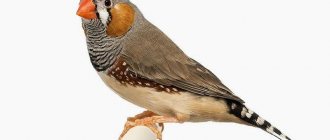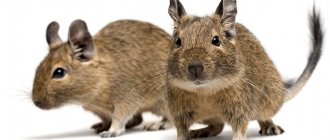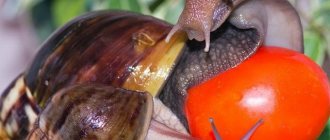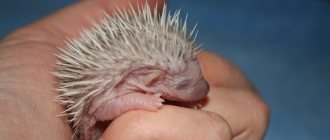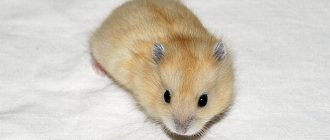Lifespan of canaries in the wild
In the wild, canaries, of course, live shorter lives.
In captivity, the average lifespan of canaries is 8–10 years . Birds live in small flocks, often flying from one place to another. Their favorite delicacy is poppy seeds, cabbage or lettuce. During the period of feeding their chicks, canaries can feed on small insects. Birds drink a lot of water and love to splash around in shallow water. For the night they gather in small flocks in trees.
As soon as the nesting period begins, canaries look for mates and separate from the flock. They make spherical nests from grass, moss and flower fluff in dense crowns high above the ground.
On average, the female lays up to 5 eggs with a speckled bluish-green hue. For 14 days, the female incubates the chicks, and during this time the male is always nearby and sings songs to her. While the chicks are in the nest, they are fed by two parents. 18 days after the eggs hatch, the chicks begin to leave the nest. During this period, the male takes care of them, showing them how to feed and drink water properly. The female begins to equip a new nest.
As soon as the second clutch begins, the male leaves the chicks and again remains close to the female. Depending on the area in which canaries nest, they can hatch chicks up to 3 times per season. Their last nesting period ends in August. The canaries again gather in small flocks and begin to fly from place to place in search of water and food.
Appearance and singing of canaries
The domestic canary belongs to the genus of canary finches; the bird’s homeland is the Canary Islands, from which the bird received its name. The appearance of canaries cannot be called remarkable, much less spectacular - in appearance they are very discreet miniature birds.
The average body length is 13–15 cm, although there are both very small species measuring 11 cm and larger ones - up to 23 cm. The color of the plumage can be very different, females are usually more inconspicuous than males, young individuals also differ from adults.
The color can be yellow, brown, red (when crossed with the fire siskin), white and with green accents.
Did you know? Canaries previously provided a great service to miners - they were taken with them when going down into the mine, since they are highly sensitive to methane, carbon monoxide and other toxic substances, and therefore could detect danger early. When the bird's singing died down, it meant it was time to go upstairs.
The main advantage of the bird, because of which man tamed it, is its most beautiful singing. The hearing and singing abilities of canaries are closely related. They are able to perceive frequencies in the range of 1100–10000 Hz, remember different sounds and their sequence, and then reproduce what they heard.
Birds often copy the singing of other birds. Only male canaries can sing, so the cost of boys and girls can differ tens of times. Sometimes female canaries also exhibit singing abilities, but these quickly end as soon as the female begins to lay eggs.
They began to domesticate birds back in the 16th century, and the nature of the bird greatly contributed to this - canaries are trusting, easy to make contact and amenable to training, they reproduce successfully in captivity, therefore, over several centuries, as a result of breeding work, many color varieties of birds were bred, which have singing abilities also vary.
Important! The well-being and health of a canary can be judged by its singing - it will never please you with a song if its condition is far from normal.
How long do birds live at home?
Such a beauty can delight you with her trills for up to 15 years.
With proper care, the lifespan of canaries in a house or apartment can reach 15 years. Particular attention should be paid to nutrition. You cannot constantly feed birds with grain mixtures. This is the same as a person constantly going on a diet.
Canaries enjoy eating greens:
- dandelion leaves
- sorrel;
- spinach;
- celery;
- road ear.
It is important to give birds fresh vegetables and fruits:
- apples;
- carrots;
- bell pepper;
- pumpkin;
- pears.
To improve digestion, canaries need river sand and charcoal, which can be purchased at a pet store..
Birds should not be overfed so as not to cause them obesity. It is enough to give them 2 teaspoons of grain feed per day.
Canaries' water needs to be changed every day. In addition to drinking water, birds also need water for splashing - for this there must be a special container in the cage.
Singing canaries
These are the most popular types of birds of this breed.
Officially, there are 3 types of this breed:
- German (harz roller);
- Belgian (Malinois);
- Spanish (timbrados).
There is also a Russian breed, but it is not recognized by the international community.
Harz Roller
The German subspecies or Harz Roller was bred in the Upper Harz, where it got its name.
This subspecies has a low, velvety voice, but the most interesting thing is that canaries sing without opening their beaks, resulting in a soft, non-harassing voice sound. In this case, the Harz roller is in a vertical position and strongly inflates the throat. The life span of these birds varies from 8 to 12 years.
Malinois
The Malinois or Belgian Warbler was bred near the city of Mechelen (Belgium).
This is a rather large bird, yellow in color, without any inclusions. The song qualities of this canary are more complex and richer in comparison with the Harz roller. But she can sing songs with her mouth open and closed. At the same time, professionals evaluate bird songs on a 120-point scale. The Belgian song canary is gaining more and more popularity among fanciers over time. Life expectancy is up to 12 years.
Spanish warbler
The "Timbrados" or Spanish song canary is one of the most ancient species, which was obtained by crossing the European canary finch with a wild canary. This is a rather miniature bird, up to 13 cm long, with a rounded body compared to the Harz roller. The vocal characteristics of the Timbrados canary are rated on a 75-point scale. Life expectancy is approximately 9 - 11 years. The Russian breed is not recorded in the International Ornithological Association "COM" as a separate, independently existing subspecies.
Although in 2005, the “State Commission of the Russian Federation for Testing and Protection of Breeding Achievements” recognized the breed: “Russian Canary Finch” and issued a certificate in confirmation. They are not recognized by the international community because they have not yet come to define a standard for the Russian singing breed.
We can say that the singing characteristic of the breed with its inherent set of knees and rating scale has not been determined. For this reason, Harz rollers are bred more in Russia.
Factors influencing the lifespan of a canary in captivity
Breeding
As soon as the babies grow up, they need to be moved to a separate cage
The body of females quickly depletes if the owner’s goal is to breed canaries . During hatching and feeding the chicks, it is very important to give the female complete food, which includes vitamins and microelements.
Canaries do not tolerate the proximity of chicks well. Therefore, as soon as the babies grow up, they need to be separated from the adult canaries.
It is not recommended to place birds of other species with canaries - they can only get along well with individuals similar to themselves.
Cell
The canary's cage should be spacious enough
Despite the fact that the bird is small, it needs to purchase a spacious cage . Canaries are active birds that love to fly, so their cage should not be less than 30 cm.
If it is expected that a couple will live in the cage, the size of the house should be 2 times larger.
Room temperature
The main component is temperature. Birds feel comfortable at a temperature of + 22–24 degrees .
You should not place the cage opposite the door or near the window - canaries do not tolerate drafts well and may die.
Cage hygiene
The cage should be washed at least 2 times a week - this will prevent the proliferation of ticks and parasites.
Bowls from which birds drink and eat must be washed daily.
Features of accommodation
Canaries are adversely affected by loud noises, such as a barking dog or a crying child. Birds love a calm environment, so you need to find a quieter place in the apartment where they will feel comfortable.
Owners should be aware that stress or severe fright can lead to the death of the bird.
Contact with animals
Any contact with a dog or cat can be harmful to the canary
It is necessary to exclude the canary from contact with any pets. The saliva of dogs and cats contains microorganisms that can lead to the death of the bird.
Lack of attention
Birds love to communicate with their owners. Therefore, it is important to pay attention to canaries when talking to them.
How to extend the life of a canary
Love and proper care are the key to a bird’s longevity. To ensure that she pleases you with her singing for a long time, follow some important rules.
- Do not place the cage in a draft or direct sunlight.
- Monitor the room temperature; for canaries it should be within 28 degrees.
- Create a complete diet.
- Don't forget to add vitamins to your food.
- Do not give prohibited foods.
- If there is a cat in the house, protect the bird from the enemy.
- Keep the cage clean; it is recommended to clean it once every 2 weeks.
- The feeder should always be clean. This is especially true for feeders that contain fresh and juicy foods. Such containers must be washed every day.
- Change your pet's drinking water every day.
- Provide water for bathing. Wash the bath after each bird bath.
These simple rules will allow your pet to live for many years. And if you love him with all your soul, caring for him will not be a burden, but a joy.
How many years canaries live and what does it depend on?
join the discussion
Share with your friends
Canaries today are often found in Russian families as pets. These birds are loved for their friendliness, insightful mind and restlessness. From the article you will learn how many years canaries live in the wild and at home, as well as what factors influence the life expectancy of these birds.
Decorative canaries
Decorative canaries differ from their colored relatives in their non-standard body shape, plumage or size. Representatives of this group are humpbacked, curly-haired, curly, crested and painted canaries.
The humpback canary looks exactly like its name. Most of all, her appearance resembles a politely bowing bird. Humpback canaries are somewhat larger than their colored relatives. Curly-haired canaries get their name from the curly feathers on their chests. They were popular in the 17th century in Europe. Birds of this breed were more graceful than usual, and sang just as beautifully. But their parents are not very attentive. Breeders try to place their chicks in simple canaries for rearing. Outbred birds take better care of their offspring. Curly and crested canaries also have exterior features and are small in size. The most famous breed of painted canaries is the lizard. Its name is translated from English as lizard. The bird received this name for its color.
Factors that affect lifespan
The lifespan of domesticated canaries depends on care and maintenance. Therefore, the owner must provide them with proper conditions.
The lifespan of canaries is influenced by the following factors:
- Genetics.
How long a bird will live depends on its hereditary predisposition to various diseases. If the chick's parents were in poor health, then their children will also suffer from certain pathologies. Therefore, you need to buy canaries in trusted nurseries or pet stores, and not from hand. You should also require all the necessary documents (pedigree, veterinary passport). Before purchasing, you should inspect the canary; it must be active and have thick, shiny, smooth plumage.
- Improper breeding of birds.
In order to quickly and inexpensively develop new breeds of canaries, breeders practice the method of inbreeding. This leads to hereditary diseases, low viability, intrauterine or early death of chicks. To prevent the young from having health problems, there is no need to exhaust the female with frequent oviposition. This leads to the depletion of the canary’s body and the birth of chicks with poor health that live less than 7 years.
- Undesirable neighborhood.
How many years canaries live at home is also influenced by other pets. To extend this period, you need to keep the birds alone or select neighbors of the same breed and preferably from the same flock. An unsuitable neighborhood can lead to constant stress, and then the bird is highly likely to wither and die. Larger neighbors can injure the canary, and lovebirds can start a fight for territory. All this threatens injury or even death. You should not keep old and young canaries together. It is also necessary to limit the access of other pets (cats, dogs, rats) to the cage.
- Lack of communication.
The lifespan of birds is influenced by the behavior of the owner. This is a very sociable bird that requires increased attention. If she rarely sees a person, she feels lonely, which causes her to become depressed and may die. To prevent the canary from wasting away, you need to place the cage so that it can always see its owners. It is also recommended to let the birds out several times a day and play with them. Lack of walks can lead to obesity and disruption of various organs.
- Conditions of detention.
A canary's lifespan will be shortened if the cage is cramped, in a draft, close to a heat source, or in the sun. Low humidity levels, temperature changes, and poor lighting also have a bad effect on canaries. Do not smoke or spray chemicals in the form of aerosols in the cage room. A bird will not live even 7 years if its owner rarely cleans the cage. In the absence of regular water procedures and violation of the daily routine, the canary is highly likely to die soon. Due to poor hygiene, she becomes withdrawn, does not sing, sometimes shows aggression towards her owner or rips off her feathers.
- Floor.
The life expectancy of a canary is longer than that of a female, who is forced to incubate eggs. The body of the latter is depleted, loses many vitamins, and requires restoration.
- Dangerous games.
In order for the canary to live long, you need to follow safety measures during games. The life of a bird is threatened by various factors: a burning burner, a poisonous houseplant, a toxic aerosol sprayed in the room, an open window, an electrical appliance, another pet that roams free, a deep container of liquid. The owner may accidentally sit down, step on or crush the pet with some object. A cat or dog could eat it, injure it, or infect it with a dangerous finch infection. A frightened bird can injure itself; out of fear, it begins to fly chaotically around the cage. And a dislocation and fracture can shorten her life.
- Stress.
In order for a canary to live long, it must be protected from stress, otherwise it may die within a few days. Provoking factors: moving to a new place of residence, the appearance of other pets, strangers in the house, their persistent attention, loud noises.
- Breed.
The length of time that canaries can live at home differs depending on their breed. Crested finches live up to 12 years. You cannot cross 2 individuals of this breed, as their offspring will not be viable. The lifespan of figured canaries is from 10 to 15 years, curly and painted canaries are about 14, curly canaries are up to 12, German warblers are from 8 to 12, Belgian warblers are about 12, Spanish warblers are from 9 to 11, colored warblers are no more than 13 .
Important! During depression, the finch stops singing and refuses food and water. Many birds die from hunger and dehydration, others gradually waste away. It is important to provide them with a calm environment.
The lifespan of canaries, like all living organisms, is affected by various diseases. Therefore, if suspicious symptoms occur (lethargy, apathy, silence, deterioration of feathers), you should contact a veterinarian. If the pathology is identified at an early stage and proper treatment is carried out, the bird’s condition will quickly recover, and life expectancy will not be shortened.
